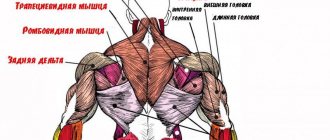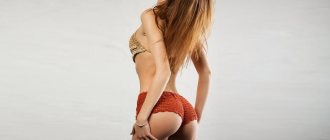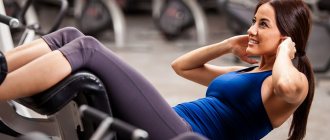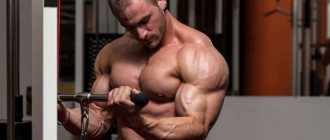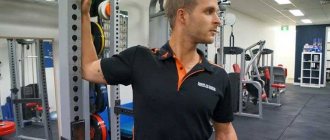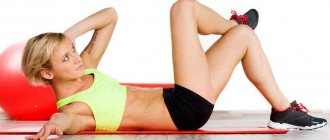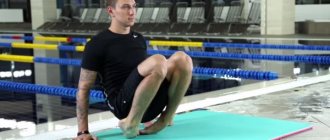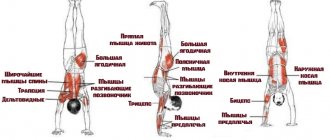It is no secret that in modern reality the cult of a healthy body is gaining more and more popularity, and more and more attention is being paid to physical fitness. Every year new trends appear in this regard, and new phenomena acquire cult status.
A beautiful, well-developed torso is one of the most important conditions for good physical shape today. In terms of the amount of effort applied during training, it can only compete with the muscles of the legs and buttocks, which are now no less fashionable to train.
Inner and outer beauty
For the ancient Greeks, aesthetics was of great importance; the beauty of form was given maximum attention. That is why such a huge number of all kinds of sculptures depicting the human body have survived to this day. Antique torso is one of their most popular varieties.
The thing is that for the Greeks, external beauty was equivalent to internal beauty, and accordingly, the aesthetic properties of not only objects, but also people were of very great importance. An ugly face or body were characteristic signs of a bad character and a dark mind, which is why the features of the depiction of negative characters in Ancient mythology are associated.
Meaning of the word torso
torso in the crossword dictionary
Dictionary of medical terms
Explanatory Dictionary of the Living Great Russian Language, Dal Vladimir
m. French for artists, the torso, the human body, without limbs.
Explanatory dictionary of the Russian language. D.N. Ushakov
torso, m. (Italian torso). Torso (book). ? The body of the statue with the head and limbs broken off (art.). Antique torsos.
Explanatory dictionary of the Russian language. S.I.Ozhegov, N.Yu.Shvedova.
-a, m. Human torso, as well as a sculptural image of the torso. Powerful t. Antique torsos.
adj. torso, -aya, -oe.
New explanatory dictionary of the Russian language, T. F. Efremova.
Sculptural image of a human torso.
Encyclopedic Dictionary, 1998
TORS (from Italian torso)
in anatomy - the human torso.
Sculptural image of a human torso.
Names, titles, phrases and phrases containing “torso”:
Great Soviet Encyclopedia
(from Italian torso), in anatomy ≈ human torso (body without head and limbs). In fine art, a sculptural image of a human torso. Antique sculptural statues are preserved parts of statues. From the 2nd half of the 19th century. T. often becomes an independent theme of plastic composition, allowing one to more clearly identify the muscular structure of the human body.
Wikipedia
Torso is the torso of a person, as well as a sculptural image of the torso.
Male and female options
As a rule, when the term discussed in this article is mentioned, the torso of a guy appears in the mind, which is not surprising, since such ideas are directly related to the cultural characteristics of human development.
The same Antiquity was characterized by much greater attention specifically to male appearance, not to mention the fact that in many countries a woman, until the 19th century, was considered an inanimate object and unworthy of attention.
A man, on the contrary, was supposed to be the embodiment of strength and courage. And accordingly, have a powerful physique and well-developed muscles (including the upper body).
The question of ideal proportions
Of course, in this regard there is a fair amount of subjectivity, which simply cannot be avoided. However, if you look back into the past, you can notice certain trends in regard to aesthetic appreciation. Having analyzed the features of the sculpture that has survived to this day, we can say that in Antiquity a relatively dry body with well-developed muscles and precise proportions was considered ideal.
During the Renaissance, which revived the culture of depicting the human body, the requirements for the aesthetic component in this regard were less strict. Sculpture and painting of the Renaissance, as a rule, are distinguished by a rather smooth depiction of the human body, not devoid of a certain percentage of fat deposits.
If you look at a typical female torso of this era, it becomes obvious that women who are clearly overweight are preferred as models. Especially if you compare the shapes with those that are fashionable today.
Connection with other words
Words containing -torso-:
- authorship
- recyclable materials
- detorsion
- dictatorship
- directorship
- distortion
- inspection
- lecturing
- innovation
- innovation
- editorship
- rectorship
- retortion
- co-authorship
- usurpation
- 47 more words...
Words starting with torso:
- torsion
- torsion bar
What is the torso like (adjectives)?
Selection of adjectives for words based on the Russian language.
naked muscular powerful mighty naked male human strong female tanned hairy athletic massive slender strong magnificent wide barrel-shaped huge bronze long beautiful skinny dark flexible white armored developed square thin pumped up beautiful embossed graceful heroic large manly sculpted small thin semi-naked short headless smooth antique naked bloody hard heavy plastic fat bare black stone chunky small steel hairless narrow triangular impressive lumpy plaster marble
What can a torso do? What can be done with the torso (verbs)?
Selection of verbs for words based on the Russian language.
shine seem to cover look rise to pass appear to remain become glossy represent burst ebb cuddle cuddle shrink appear remain cuddle tight tight appear evade shine hit cause grow belong know crown continue tear pin down tumble cover tense explode sway sparkle get lost flow rise beat preserve bend move bow crown learn stand turn resemble strike come out shine limp collapse bend fall form support hang overhang remind allow
Associations to the word torso
side head hand wall shape aquarium window neck leg table trace background face tree exhaustion hint ring platform belly deck back waist torso effort chest mane newspaper limb remainder Mike level east age part weight mirror clang pier trunk door fountain penis axis direction amulet bed safety bath scar presence belt mask base hole beach limit rear chair vestibule club flesh sheet help seam
Anagrams of torso
growth grade rope stor
Synonyms for torso
body stan torso torso
Scope of use of the word torso
Sports General vocabulary Medicine Construction Mathematics
Antique sculpture of modern times
Despite the fact that the times of ancient Greece ended a long time ago, the legacy of this era remains with us to this day. Torso mannequins are a clear confirmation of this. In the modern world, however, in addition to their aesthetic function, they also have an exclusively practical purpose: the correct shape best demonstrates the advantages of cut and material.
Another area of use for such devices is martial arts, in which dummies of this type are used to practice strikes.
History[ | ]
The beginning of the epidemic in South China[ | ]
| This section is missing references to information sources. Information must be verifiable, otherwise it may be questioned and deleted. You may edit this article to include links to authoritative sources. This mark was set on February 23, 2020 . |
The SARS epidemic first emerged in Guangdong Province in China. The first SARS case, reported by people from rural areas in Foshan, Guangdong, was reported in November 2002, and the first patient, a farmer, was admitted to Foshan First People's Hospital. The farmer died shortly after being hospitalized; the cause of his death was never precisely determined. However, it became clear that the patient died from an unknown type of disease that was life-threatening.
Despite taking some less than successful measures to combat the spread of the disease, Chinese government officials chose not to inform the World Health Organization about the sharp increase in the number of infected residents and, until February 2003, limited media coverage of the discovery and spread of the disease in order to maintaining public confidence in the authorities' ability to quickly deal with the problem.
The lack of openness and timely provision of truthful information led to a significant delay in the beginning of the efforts of the global scientific and medical community to combat the growing epidemic and resulted in massive [ how many?
] death[
source not specified 186 days
]. As a result, the government of the People's Republic of China (PRC) came under severe criticism from the international community. Subsequently, the Chinese government officially apologized for the slowness, blocking of information and failure to take measures to combat the SARS epidemic.
The first step in recognizing the outbreak of the epidemic was on November 27, 2002, when the Global Public Health Intelligence Network, created in Canada, activated the electronic early warning system, which, in turn, is part of the World Health Organization (WHO), to urgently notify about the beginning of a serious epidemic of an unknown virus in China.
After the results of the investigation into the outbreak of a mass infection were received by the medical network, the World Health Organization requested information from the Chinese authorities. Information was requested from Chinese authorities on December 5 and 11, 2002. Global spread of the outbreak was hindered to some extent by updates to various medical early warning networks, but in early 2003 a global warning was issued worldwide to completely avoid travel to Southern China.
Spread of the disease to other countries[ | ]
The epidemic came to public attention in February 2003, when American businessman Johnny Chen, after traveling to China, fell ill with SARS, the symptoms of which he felt during a flight to Singapore. The plane was urgently landed in Hanoi, the capital of Vietnam.
On February 28, 2003, a request was received from a French private hospital in Hanoi (Vietnam) to WHO to consult a patient who was suffering from an unusual influenza-like illness. The hospital doctors assumed that the patient was suffering from influenza, presumably classified as avian influenza. Dr. Carlo Urbani, a specialist in infectious diseases, responded to the request from Hanoi. Despite all measures taken, the patient died in the hospital shortly after admission. At the same time, despite various protective measures against infection, some of the medical workers also began to experience similar symptoms of the disease. Infectious disease specialist Carlo Urbani and five other medical workers subsequently died while investigating the nature of the mysterious causative agent of a fatal human respiratory disease.[9]
A huge amount of work was done at the hospital with medical documentation, and numerous samples were taken for research in microbiological and virological laboratories. Epidemiological work was aimed at searching for the causative agent of an atypical infectious disease and brought the desired result.[9]
Dr. Carlo Urbani quickly discovered that the causative agent of the infectious disease was atypical and extremely dangerous. He and his colleagues achieved the introduction of strict quarantine measures aimed at quickly localizing the infectious disease. They were able to convince the Vietnamese government of the urgent need to introduce a general quarantine, although this created serious economic difficulties for the country.[9]
If we compare the SARS epidemic in Vietnam and its neighboring countries, such as China, Hong Kong, Singapore and others, then Vietnam was the first country in which WHO suspended quarantine.[9]
The Vietnamese group of medical workers was replenished with specialists from international groups of doctors who had experience working with the Ebola virus, that is, the most qualified specialists who had experience working with infectious diseases that are characterized by high contagiousness took part in the epidemiological and clinical study.[9]
Virologist Carlo Urbani played a leading role in organizing rapid quarantine measures that saved the lives of tens of thousands and presumably millions of people, as well as in preventing a panic reaction among medical personnel and the media. On March 11, 2003, after the introduction of quarantine, he felt symptoms of the disease that he himself had been struggling with for the past few weeks. At this time he was on a plane flying from Hanoi to Bangkok. Upon arrival at the Bangkok airport, Dr. Urbani asked those who met him not to approach him. He was taken in an ambulance to the block of a local hospital for infectious patients. For two weeks he desperately fought the infectious disease and died on March 29, 2003 in a hospital in Bangkok. In an article published in The New England Journal of Medicine on May 15, 2003, its authors Brig Reilley, Michel Van Herp, Dan Sermand, Nicoletta Dentico wrote that they experience mixed feelings: on the one hand, this is a feeling of pride in the doctor, the devoted to his duty, having discovered and studied a new disease, and on the other hand, an indescribable feeling of grief that befell the entire civilized world in connection with the untimely death of Dr. Carlo Urbani and his colleagues.[9]
On March 12, 2003, WHO issued a global quarantine warning and alert to stop the spread of this disease.
According to WHO, the method of combating the SARS epidemic, which was developed by microbiologist Carlo Urbani in 2003, still represents the current international protocol for combating this type of disease[10].
Ideal today
As mentioned earlier, these days the cult of a healthy, beautiful body is becoming increasingly popular. Many of us are ready to spend our days in the gym in order to achieve an ideal result. What exactly is he?
If you analyze the photos of the torso that occupy the first positions on the Internet, you can identify two main trends: a large amount of muscle mass and the desire for very distinct forms. Of course, this rule applies more to men, because for the fair sex today it is much more necessary to have a toned stomach with barely visible cubes of the abdominal region.
In the case of men, the torso muscles should be expressed as well as possible. This is especially true for the muscles of the thoracic and abdominal regions, the development of which is given maximum attention today.
Errors in training programs
As a rule, when it comes to developing the muscles of the upper body, all kinds of pull-ups, push-ups and crunches most often come to mind, designed, as if by a wave of a magic wand, to get rid of excess fat deposits and indicate a clear relief. A person who is far from the world of bodybuilding and proper training most often starts with just such a program and, which is quite natural, does not get the desired result.
For the correct, organic development of the muscles of the upper body, an integrated approach is required, including several types of dumbbell and barbell presses and high-quality exercises using a block simulator and parallel bars.
No less important in this regard is the system of performing these exercises: their selection, combination and the number of repetitions and approaches during execution. In fact, the same type of effort, depending on the conditions, can be used for both muscle building and the cutting process. The key role in this regard is played by the number of repetitions and speed of performing an exercise.
Does body proportions affect asana practice? Part one
Share:
We are different. We were born different. Some have long limbs or a short torso, while others, on the contrary, have a very long torso relative to short arms and legs. Does the correct adjustment of asanas depend only on the structure of the body? Let's look at those yoga asanas that may not look the same for people with different body proportions.
The more complex the practice becomes over time, the more poses appear, the mastery of which directly depends on the individual body structure. It is important that the teacher understands this and helps each practitioner get into the asana correctly and safely.
For example, those who have a wide back and a large belly experience difficulties even in the initial group when performing a complex of standing poses with a grab behind the back (Uttita Parshvakonasana, Parivrita Parshvakonasana, Parivrita Trikonasana). Regular practice will help correct the situation, but you need to keep in mind that such a person can curl deeper than someone who has a naturally thin waist.
A person with long arms and legs (relative to a short torso) masters shoulder eversion poses (Eka Pada Rajakapotasana and Natarajasana) much faster than someone with short arms. The first will be able to get into these asanas even with a not very deep deflection and without injury, but for the second everything will work out only with a very good deflection. Therefore, a person with short arms should work on backbending with other asanas (Ushtrasana, Bujangasana, Dhanurasana and Urdhva Dhanurasana) and not rush into mastering backbends with eversion of the shoulder joint, as this can lead to unpleasant injuries.
Badhakonasana can be quite tricky for people with long legs, especially if their thigh is significantly shorter than the lower leg. The shorter the legs, the easier it is for a person to lower their knees to the floor. The longer the legs, the more the hips must open to do this. The person can then rotate their legs at the knees to touch the floor rather than at the hips. Such a step can lead to knee injury, which will make further sitting meditation impossible.
But Supta Bhekasana, Eka Pada Sirsasana and Yoganidrasana will be possible for those who have longer legs. If the thigh is longer than the lower leg, then in Yogadandasana it will be easy to move the feet under the armpit. With the opposite ratio, the asana requires more mobility in the hip joint.
In Prasarita Padottanasana asana, it is important to stretch your back well down. But it will be difficult for long-legged people to lower their heads to the floor; this can be achieved with legs spread wide apart. For those with short legs, the head touches the floor before the back is fully extended.
It is difficult to get into Garbha Pindasana with large or full legs. Hindus, for example, recommend pouring oil on your hands before placing them in the Lotus. As soon as this starts to work, you should replace the oil with water. And when this starts to work out, you can perform the asana without liquid. The length of the arms is important in the continuation of this Kukutasana pose, the same goes for Bhujapidasana and Titibhasana. With short arms, there is no way to raise the pelvis high.
Bhujapidasana (arm balance)
The greater the distance from the elbow to the shoulder joint relative to the body, the more stable Mayurasana will be. In this asana, as well as in Viparita Karani and Pinchamayurasana, the advantage of long arms is even more noticeable.
In the opposite situation, the hands in Viparita Karani are lowered under the sacrum, and an obtuse angle is formed. There is no way to set a right angle to drop the weight directly to the floor. The pose will be mastered, but it will not be easy or stable. If the forearm is short, the pose will require more strength training due to the reduced support area. But for those with long legs, it is more difficult to perform Navasana and Shalabhasana: long limbs create additional weight.
Viparita Karani (inverted pose or “birch tree”)
Even if those with long arms and legs stretch their backs very much in Janushirshasana, they will still not succeed in the asana. And short-legged craftsmen in this asana touch the toes of the straight leg with their nose.
It is important that the teacher can adequately assess the student’s capabilities. After all, with a long body and short limbs, you should achieve a good deflection and only then master the exit from the bridge to a standing position. Those with long arms and legs will stand up much easier with a less deep deflection.
Iyengar in his famous book “Yoga Dipika” offers the following combination - Viparita Chakrasana. Many teachers notice that such a ligament is mastered faster by people with long limbs. It is easier for them to learn how to transition through a handstand, then through a headstand and forearms.
This asana is difficult for people with short legs and arms. It makes sense for them to first master the transition through Shirshasana or Pinchamayurasana. So, depending on the proportions of the body, the hierarchy of complexity of these dynamic ligaments changes.
No matter how different we and our bodies are, no matter how deeply we bend or bend, the only main thing is the desire for inner peace of mind. Observation. Attention. Detachment. Be attentive and detached witnesses to what happens to you while performing asanas.

